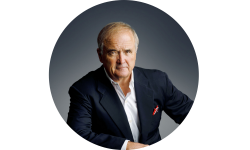
The original version of this article appeared in Italian in the L’Economia Civile section of the newspaper Avvenire, by the same author, on 26 March 2025.
On April 23rd, YouTube will officially celebrate its 20th anniversary – two decades of revolution in the world of digital content. Created by three former PayPal employees – Steve Chen, Chad Hurley, and Jawed Karim – the platform was born with a clear goal: give people a voice and show them the world.
It all began on April 23, 2005, with Me at the Zoo, a 19-second video in which a young Karim talks about his visit to the zoo. Today, that clip has surpassed 350 million views.
Within just six months, YouTube already had six million daily users. A meteoric success that, in 2006, led Google to acquire it for 1.65 billion dollars.
Since then, the platform has never stopped growing: today, it counts over 2.5 billion monthly active users, increasingly establishing itself as the beating heart of online video culture – one that, in the coming years, could become the new television.
And it’s doing so in two ways: by drawing more and more viewers away from traditional TV programs and by physically making its way onto television screens.
In the United States, this is already the case, as TV is now the primary device for watching YouTube videos.
On TV, the watch time for YouTube content has grown by over 30% compared to the previous year, and here, on average, viewers watch more than 1 billion hours of content each year.

Today, Google’s platform is no longer just home to YouTubers but also to journalists, analysts, and, more broadly, independent content creators who use it as their primary communication tool.
More and more top reporters are in fact leaving traditional TV networks to launch their own channels, reaching their audience directly without intermediaries.
This is because YouTube is no longer just a social media platform: it has become a showcase for news, entertainment, and education.
A striking example of this is the boom in video podcasts, which are shifting viewers’ attention away from radio and traditional TV toward a personalized, on-demand experience.
Thanks to video integration, podcasting has taken on a new dimension, evolving from a simple audio experience into a kind of digital talk show.
Some figures help illustrate the scale of this trend: in 2024, YouTube users watched over 400 million hours of podcasts per month directly on living room devices. The platform has also reached an astonishing one billion monthly active users watching podcasts.
These numbers highlight YouTube’s growing dominance in the industry, having surpassed longtime competitors like Spotify and Apple Podcasts last year.

Foto: Flickr.
Successful creators are making YouTube increasingly resemble a television schedule.
While Netflix and other streaming platforms are trying to attract top personalities with offers to produce original formats, many prefer to stay on YouTube, where they can retain full control over their content and monetization.
It’s no coincidence that, in Forbes’ description of the 50 highest-earning influencers of 2024, one word stands out more than any other: YouTube.
Last year, these 50 influencers earned a combined 720 million dollars, an increase of 20 million from the previous year.
At the top of the list is Jimmy Donaldson, better known as MrBeast, who made 85 million dollars in the past year and is currently in talks with a group of investors to acquire TikTok’s U.S. division.
His social media profiles collectively boast 503 million followers, with over 320 million on YouTube alone.
This is also happening because YouTube’s business model rewards user loyalty, encouraging creators to experiment with more structured formats – resembling talk shows, in-depth journalism, and investigative reports.

YouTuber James Donaldson, known as MrBeast. Photo: Wikimedia Commons.
The shift from traditional television to an ecosystem like YouTube could mark a significant social transformation.
The success of creators like MrBeast shows that entertainment no longer depends on major networks – it can emerge from the ground up through a mix of creativity, strategy, and ad monetization.
If the last decade was defined by the streaming revolution led by Netflix and other on-demand platforms, this one seems to belong to YouTube.
However, despite its global impact, cultural dynamics still shape the pace of adoption. In Italy, for example, traditional television remains strong due to the country’s high average age and the role TV has played in shaping a national-popular culture since the 1950s.
Yet even here, YouTube’s numbers are rising rapidly.








